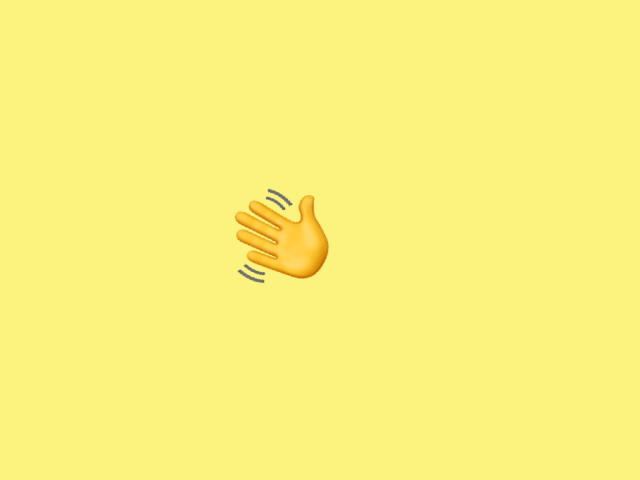Innovating the first virtual reality training experience for flight attendants at Delta Air Lines
Over the course of my summer internship at Delta Air Lines, I worked closely with a team of strategists, researchers, and engineers to design and develop a VR experience slated to serve 3,6000+ flight attendants in training.
The result was overwhelming satisfaction and future support from the training team. Some key details of this project are proprietary knowledge and subject to NDA – but I’m happy to speak more in-depth in an interview context.
Designer, Researchers, Research Manager, Design Manager, Engineer Lead
10 weeks, Jun – Aug 2025
Figma, Figjam, Unity
VR/Spatial Design
Prototyping in Unity
Stakeholder Communication
Storyboarding
Vision and Scoping
Wireframing
Scalable VR experience to improve learning outcomes through scenario-based immersion and personalized feedback
Here are some of the core features that I designed – they leverage the uniqueness of virtual reality to solve current pain points and business needs in flight attendant training.
Gesture tracking and immersive feedback
Rather than using controllers, trainees can simply use their hands to learn important gestures and movements – helping them build that muscle memory quicker.
Scalable design system
One big challenge of designing for VR was the lack of precedence within the existing design system. I crafted on-brand and scalable components for future VR projects.
AI training summary and next steps
Fine-tuning AI according to training contexts, we created a training feedback system that targets improvements in a more personalized way for each individual training.
VR design from 0 to 1
Led the systems, interaction, and UI design for a virtual reality experience to enable rapid VR development work and delivery in < 3 weeks.
Building clarity and consensus
Successfully scoped the VR experience despite ambiguity by leading workshops with external stakeholders where I built consensus around complex design decisions and secured leadership approval.
Driving strategic VR adoption
Proactively leveraged design strategy to prioritize core problems and envision a long-term roadmap for VR integration in training.
In-depth stakeholder review & user research to identify the biggest pain points and opportunities for VR
Flight attendant training is a long, stressful process with multiple components to gain qualification. We visited the training center to understand the current state of training and interviewed key stakeholders – training instructors, flight attendants, and other business leaders.
Unaccessible and expensive training facilities
Several trainings are only available once throughout the qualification period, VR could help improve training outcome through repetition and reflection.
Missing individual, personalized feedback
It’s difficult for instructors to give individual feedback when many training happens in groups. VR presents an opportunity to offer more personalized feedback.
Trainers struggle to teach critical thinking
Stakeholders were interested in improving trainee's critical thinking and decision-making skills; procedural elements of VR lend naturally to this.
How might we create a scalable VR solution that improves training outcome through scenario-based learning?
I scoped our POC to demonstrate the value of VR and gain stakeholder support for production within a limited time span
One obstacle in the beginning was the immense amount of opportunities & possibilities in VR – but too little time. In order to create the most impactful work and demonstrate VR’s full capacity, we did the following:
Mapping out all possible emergency scenarios & aligning on a scalable proof of concept
We created a comprehensive flow chart of all the possible scenarios and critical decision points that the trainee experiences; we workshopped our vision with stakeholders and identified the best POC scenario to create in VR
Storyboarding & workshopping to engage stakeholders, ensure accuracy, and drive alignment (NDA)
I consolidated insights from user and stakeholder research into a storyboard of the VR experience that my team envisioning. I presented and workshopped the storyboard with external stakeholders in an engaging experience, which:
Ensured the accuracy of our training experience to meet strict industry standards
Quickly achieved buy-in and engagement from stakeholders by storyboarding to simplify complex VR concepts and interactions
Starting with systems design – designing flows, interactions for gesture tracking
First, I worked closely with our VR engineer to lead the systems design of the VR experience – which consists of how the VR experience and interactive objects respond to user input, and how we track user’s actions to give appropriate feedback during and after the simulation.
Adopting user-centric spatial design patterns validated through user testing
I quickly picked up some basic prototyping skills in Unity and began to test out essential moments of interaction and design iteratively. The following is an example of an element born out of testing with actual users and putting headsets on them.
Final prototype in unity
Designing an AI training summary feature that gives personalized feedback on training performance and next steps to trainees
Building off of gesture-tracking features, I defined and designed a summary screen that provides detailed feedback on each gesture check
Defining success, failure, and caution to give feedback on a range of user action
I first defined the criteria for success, failure, and caution with regard to each critical action performed by the user and gesture-tracked. The goal is to come up with a system that could track and give feedback on a range of user action.
AI content design that is transparent but not reductive, and encourages a second try
I worked with AI engineers to understand how to prompt and generate feedback to users. We aimed to give feedback based on individual performance and highlight clear next steps for each trainee.
Learning summary
Putting all the elements together, I designed the learning summary screen where users receive tailored feedback based on their individual performance in VR training.
Translating the Delta design system and brand identity into 3D space
Designing outside the typical frame:
While it was easy to simply place UI elements into a 3D VR environment, I iterated the visual components of the simulation according to spatial design best practices and pushed the boundaries of our existing design system to create a more immersive, professional VR experience.
Training selection screen – before
For key UI screens, I started out with the Vision OS and the Meta Quest design kits and applied Delta’s visual design system. While this laid a solid foundation for good vr design practices, I iterated to get the right look and feel for our specific use cases.
Training selection screen – after
Throughout my design iterations, I referenced many vr, game, and spatial design interfaces to break outside existing templates and create engaging, compelling interfaces; I shared my designs frequently with other designers and engineers to gather feedback.
Tutorial screens
Initially, we placed all tutorial pages in a carousel – however, internal testing showed users being unaware of and unfamiliar with horizontal scroll motion in VR. The final result uses a more expanded layout presenting tutorials page-by-page to reinforce learning; using the simplest interaction pattern to reduce friction
Creating a patternized and modular design style guide to reduce tech debt and facilitate handoff
At the end of the design process, I created a hand-off page with annotated components built in modular fashion & in alignment with the GUI dev process in unity and vr. This allowed our developer to work fast without being bogged down by building components from scratch.
“I’m amazed by how it captures all the details we were taught to pay attention to in our training!”
When we demoed our VR experience to flight attendants and training instructors, they agreed on how detailed and accurate the training experience and feedback was.
DEMO’ING OUR VR TRAINING SOLUTION
The power of design iterations
As a junior designer, one of my biggest takeaways was how to polish and push designs to production level standards (it’a harder than one expects). From initial frustration with designing for VR to iterating with confidence, I learned to ask questions, spot inconsistencies, and implement feedback.
Becoming a cross-functional collaborator – design as the connection between research, strategy, vision, and development
Working alongside researchers, engineers, and strategists, I leveraged design thinking and visual storytelling to bridge cross-functional perspectives and engage stakeholders at every step in the process. Design is not only a final deliverable but a tool for thinking and collaboration.



























